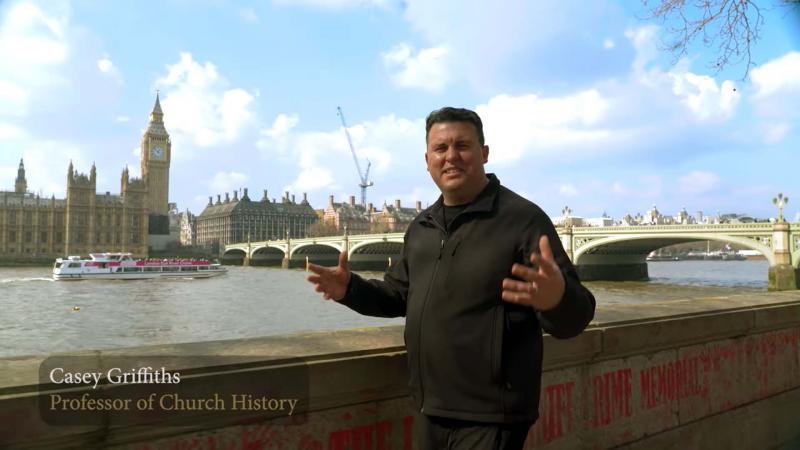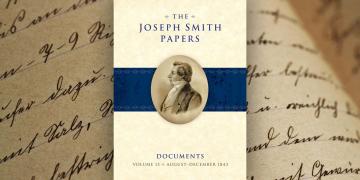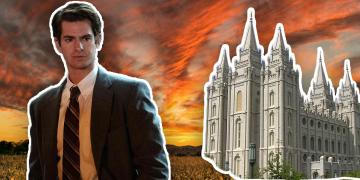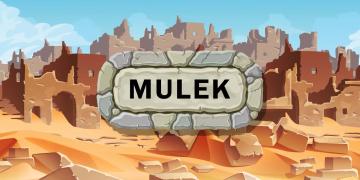You are here
Book of Mormon Central is in the process of migrating to our new Scripture Central website.
We ask for your patience during this transition. Over the coming weeks, all pages of bookofmormoncentral.org will be redirected to their corresponding page on scripturecentral.org, resulting in minimal disruption.
Many of the people who joined the early church were natives of the British isles. How did they learn about the restored gospel of Jesus Christ? Where in Great Britain did they come from? Who was sent to teach them? Join Professor Casey Griffiths as he travels to several locations in England—London, Liverpool, Preston, and more—to explore church history in the British Isles.
The First British Mission - Conditions in London and Liverpool
On his arrival in London, Casey meets with church historian Peter Fag to learn about the context of the very first British mission. The first missionaries who arrived were struck by the poverty of many of the people: They saw whole families sitting on the street begging for bread and watched children go from house to house asking for something to eat. The poor people the missionaries taught resonated with the gospel concept of Zion, a society with no poor among them. A gospel that taught such a principle was appealing to them.
Heber C. Kimball
Among the missionaries who came to preach the gospel was Heber C. Kimball. When Joseph called him to serve in England, he felt trepidation. He saw England as an elegant country and saw himself as an uneducated, unsophisticated man. Still, he accepted the calling. When he and the other missionaries made land in Liverpool, Heber wanted to be the first missionary from the church in England. Before their boat even finished docking, he leapt off the boat, 7 feet over the water, to be the first ashore.
Preston: Truth Will Prevail
After some work in Liverpool, the missionaries traveled to Preston, about 33 miles north-northwest. When they arrived, they saw a banner in the city that read, “Truth Will Prevail.” Heber noted, “It being so seasonable, and the sentiment being so appropriate to us and our situation, we were involuntarily led to exclaim, ‘Amen! So let it be.’”
Adversity in Preston
The missionaries’ work in Preston, however, was not without opposition. In fact, one evening, in the building where the missionaries were living, they had a vision of evil spirits with horrible countenances, gnashing their teeth. Heber said, “Although I felt exquisite pain, and was in the greatest distress for some time, and cannot even now look back on the scene without feelings of horror, yet by it I learned the power of the adversary, his enmity against the servants of God, and got some understanding of the invisible world.” When he later told Joseph Smith, Jr. about the incident, Joseph said, “I then knew that the work of God had taken root in England. It was this that caused the devil to make a struggle to kill you.”
Baptisms at the River Ribble
The first baptisms in England took place in Preston, at the River Ribble, now considered a sacred site. After the missionaries spoke to the congregation of one James Fielding, a pastor, 9 people volunteered for baptism. In fact, two of them raced to the river to be the first baptized in the British Isles. In 8 months there were over 1,400 saints in the Preston area, worshipping in 26 branches.
Effects of the First British Mission
Many saints in Great Britain immigrated across the sea to Nauvoo, Illinois to join the prophet Joseph Smith and the body of saints there. Eventually 1 in 3 of the saints in Nauvoo was a native of the British Isles. Decades after the missionaries’ service, there would be about 30,000 saints in the British Isles, making up 60% of all the church members in the world. If you include those who immigrated to the United States, at one point 80% of members of The Church of Jesus Christ of Latter-day Saints were natives of Great Britain.
Join us again for Part 2 of this series about church history in the British Isles!
Subscribe
Get the latest updates on Book of Mormon topics and research for free








